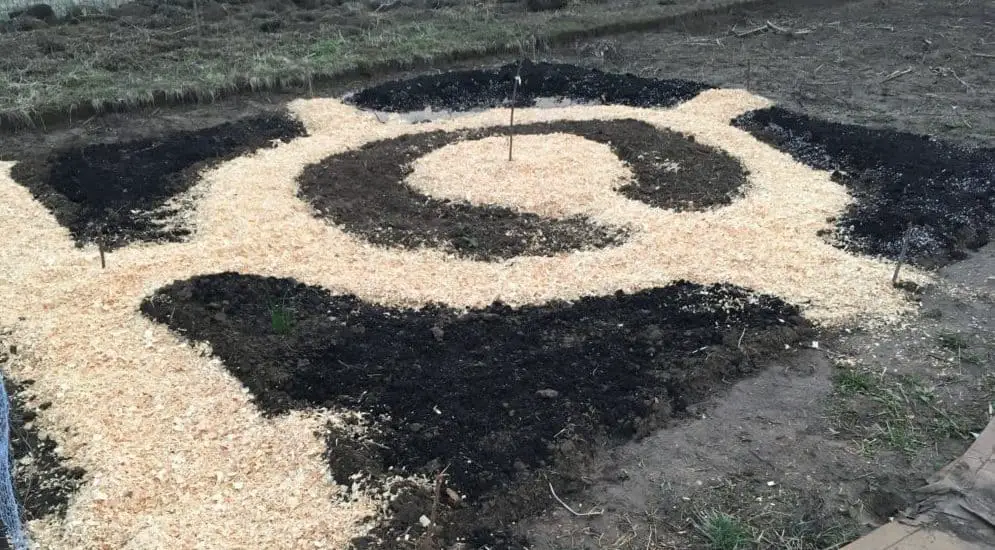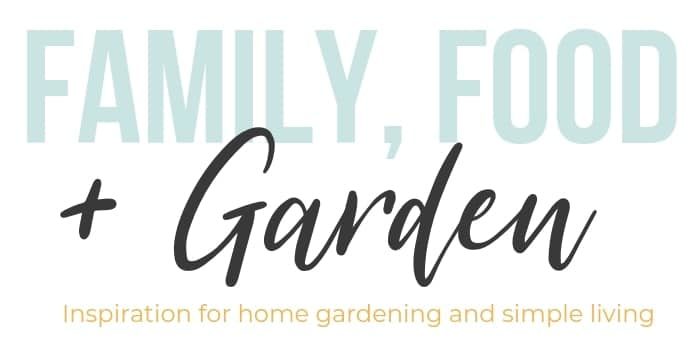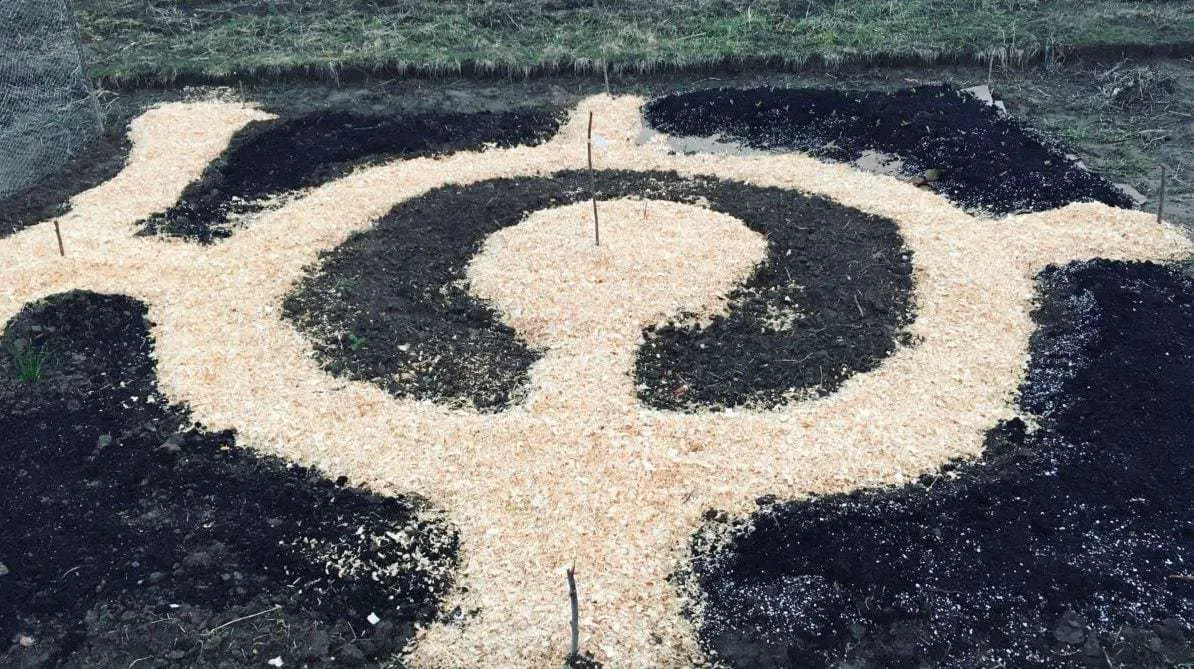Keyhole garden beds are a neat permaculture design.
When we started designing our garden beds in our new location, I knew I wanted to integrate permaculture design, symmetry and beauty for some edible landscaping.
I loved the idea of creating a mix of a keyhole garden with a mandala design. This post will cover part 1 of how we drew out, designed, and mapped out the garden bed and what keyhole and mandala beds are. I really look forward to sharing part 2 once the garden beds fill out this summer!
Our Keyhole Garden Bed Design (Step-by-Step)
When we started doodling ideas for our keyhole garden beds, I knew I wanted to create a pretty design with some permaculture elements. I was drawn to the ground level keyhole beds, but also loved the way symmetrical garden designs looked in mandala gardens. Because I’m also planting a medicinal herb garden, I was looking for an eye appealing edible landscape design. We already designed our garden beds to have a partial chicken run around two garden edges for bug and weed control, so our area to work with wasn’t too wide.
This was our concept design before we mapped out the beds outside. We wanted 4 entrances so that it was pretty and fun for the kids to run around. I almost blocked off two of the paths for a slight increase in bed size. We went with very narrow paths, only 1 foot across with a 4 foot diameter circle in the center. One thought we had is to use the keyhole garden bed in the center as the base of a teepee where we could grow beans up and the kids could sit underneath. The central keyhole bed is 2 feet wide.

Mapping Out the Keyhole Garden Bed
We measured and designed our mandala permaculture keyhole garden beds after doodling it on paper first. We created this vegetable garden design so it had a keyhole in the center and four entrance garden paths. To make a symmetrical garden beds you need to measure it out properly. We wanted the garden entrance to face something beautiful and I can’t wait to see it fill in with plants this summer. Our kids immediately loved running around the paths.

Measure the Keyhole Garden
First we needed to measure out a square and mark it off (we used broken sticks). We created a 14 foot square. Then we made our 4 entrance paths so that they were symmetrical. The stick in the center was measured 7 feet from each corner stick, with 6 inches on each side of the stick to make a 1 foot path.

Making the Central Circle for the Keyhole Garden
Next we needed to make our central circle. To do that we used a long measuring tape and worked diagonally across the square to get the central point.

Our central circle was going to be 4 feet in diameter so we measured a 2 feet radius and dug out the circle.


The rest of the paths were measured to be 1 foot around the central circle and we also left open 1 foot to be the entrance of the keyhole.

Mulching the Keyhole Garden
Then I had to hoe out all the remaining grass. We mulched the paths with wood chips until we get a load of wood mulch from a local source.

Other Keyhole Garden Bed Designs
Great Lakes Permaculure shows you how you could attach many keyholes together to reduce pathways and make efficient use of space.

There is another kind of raised keyhole bed that has a central compost system.
I love this raised keyhole garden bed design. We might try one of these garden beds later on, as I like the idea of adding compost into the middle and allowing it to add nutrients back into the soil. You can see below how the design works from Mon Jardin Permaculture.

Concern Worldwide goes into further details of how the keyhole raised beds works

Have you designed a keyhole or mandala garden bed?







